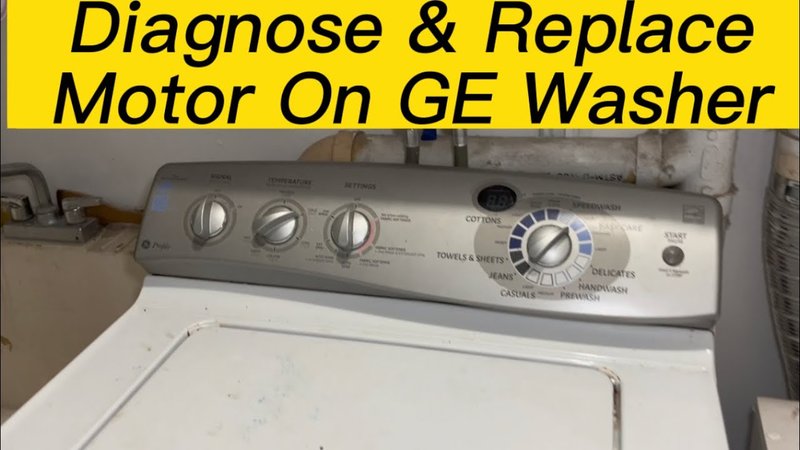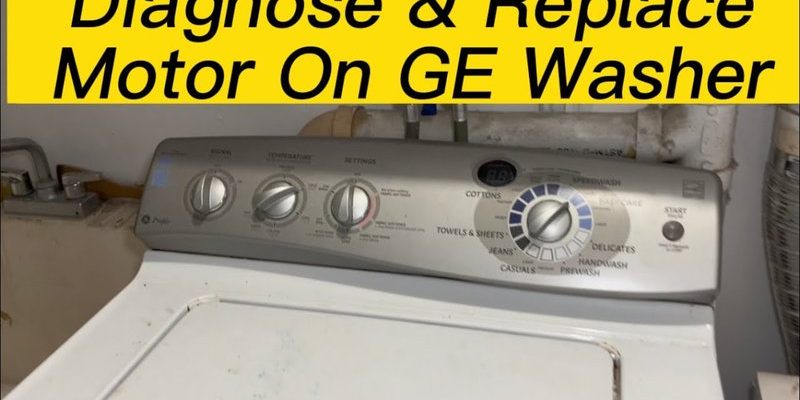
The “LE” error code on GE washing machines usually signals a problem with the motor. Essentially, it suggests that something is preventing the motor from running properly. Think of it like trying to start your car only to find that the engine is refusing to cooperate. This isn’t an issue you can simply ignore, especially if you want clean clothes anytime soon. But before you pick up the phone and call your friendly neighborhood technician, it’s good to understand what might be causing the issue and whether you can resolve it on your own.
Understanding the LE Error Code
Alright, let’s break it down. The “LE” error code can pop up for several reasons, but it generally indicates a motor-related problem. At its core, the motor is like the heart of your washing machine. It’s responsible for agitating your clothes, which helps scrub them clean. When the motor can’t do this, your washing machine can’t complete its cycle. So, what could be causing this hiccup?
One common culprit is overloading. Imagine trying to fit all your clothes into a suitcase that’s just too small. The motor struggles in much the same way when you overload your washing machine — it just can’t handle that extra weight. This extra strain can trigger the LE error code. Another possible reason might be related to a communication issue between the machine’s control board and the motor. This is like when your phone and Bluetooth speaker can’t seem to sync up, leaving the speaker silent.
Sometimes, the LE error code might also point to more mechanical issues, like a faulty motor rotor position sensor, which monitors the motor’s speed and helps to keep things running smoothly. It’s like a traffic cop for your motor, directing its movements. If it’s on the fritz, it can stop your washing machine in its tracks.
When to Call in the Pros
So, at what point should you call a technician? Here’s the deal: If you’ve tried addressing basic issues like reducing the load size and the LE code still pops up, it might be time to seek professional help. Similarly, if you’re not comfortable tinkering around with electrical components, it’s best to leave it to the experts. Safety first, after all!
A professional technician will have the right tools and know-how to diagnose more complex issues. They can check connections and replace faulty parts, ensuring your washing machine is back to working order without you having to guess what to do next. Much like you’d call a mechanic for a car engine problem, a specialized technician is your go-to for motor-related washing machine woes.
If your washing machine is still under warranty, calling a technician is a no-brainer. The last thing you want is to accidentally void that warranty with a DIY fix gone wrong.
Preventing Future LE Codes
No one wants to deal with a washing machine error code more than once, right? To help keep that pesky LE code at bay, there are a few habits worth adopting. First, be mindful of how much you’re loading into your washing machine. If you find yourself cramming clothes in, it might be time to lighten the load. A balanced load doesn’t just help avoid error codes, it also ensures your clothes come out nice and clean.
Regular maintenance is another solid step. Just like you wouldn’t skip an oil change for your car, periodic checks on your washing machine can catch little issues before they become big problems. Cleaning out the drum and wiping down seals helps keep things in good condition, too.
Finally, consider the layout of where your washing machine sits. Make sure it’s on a level, stable surface to avoid undue strain on the motor. With these simple steps, you’re setting yourself up for fewer headaches and longer-lasting laundry appliances.
In summary, while the LE error code can seem daunting at first, it’s often just your washing machine’s way of asking for a little bit of TLC. Whether it’s a simple adjustment or a call to a technician, addressing the issue head-on ensures your washing machine gets back to what it does best: giving you fresh, clean clothes.
